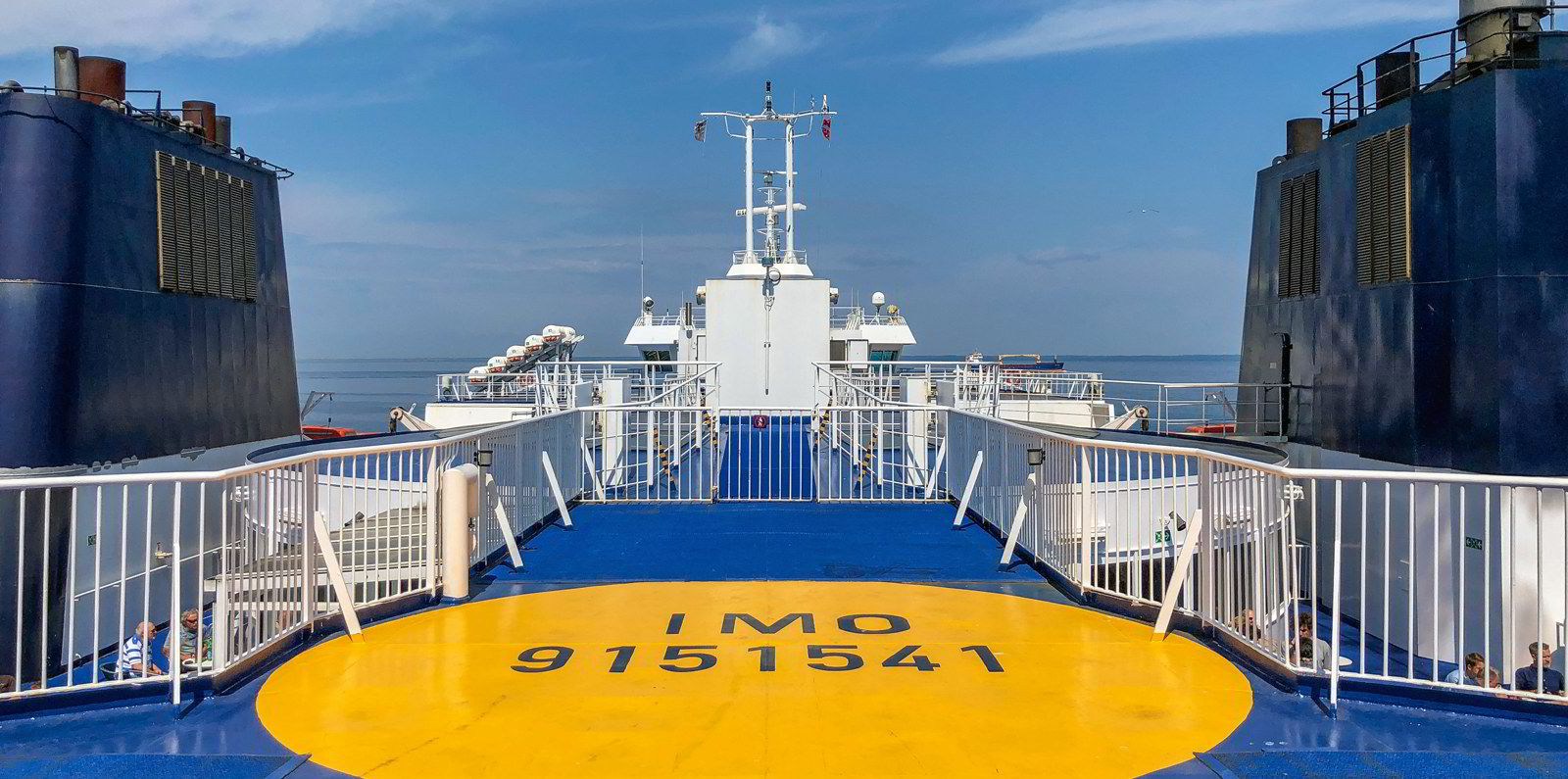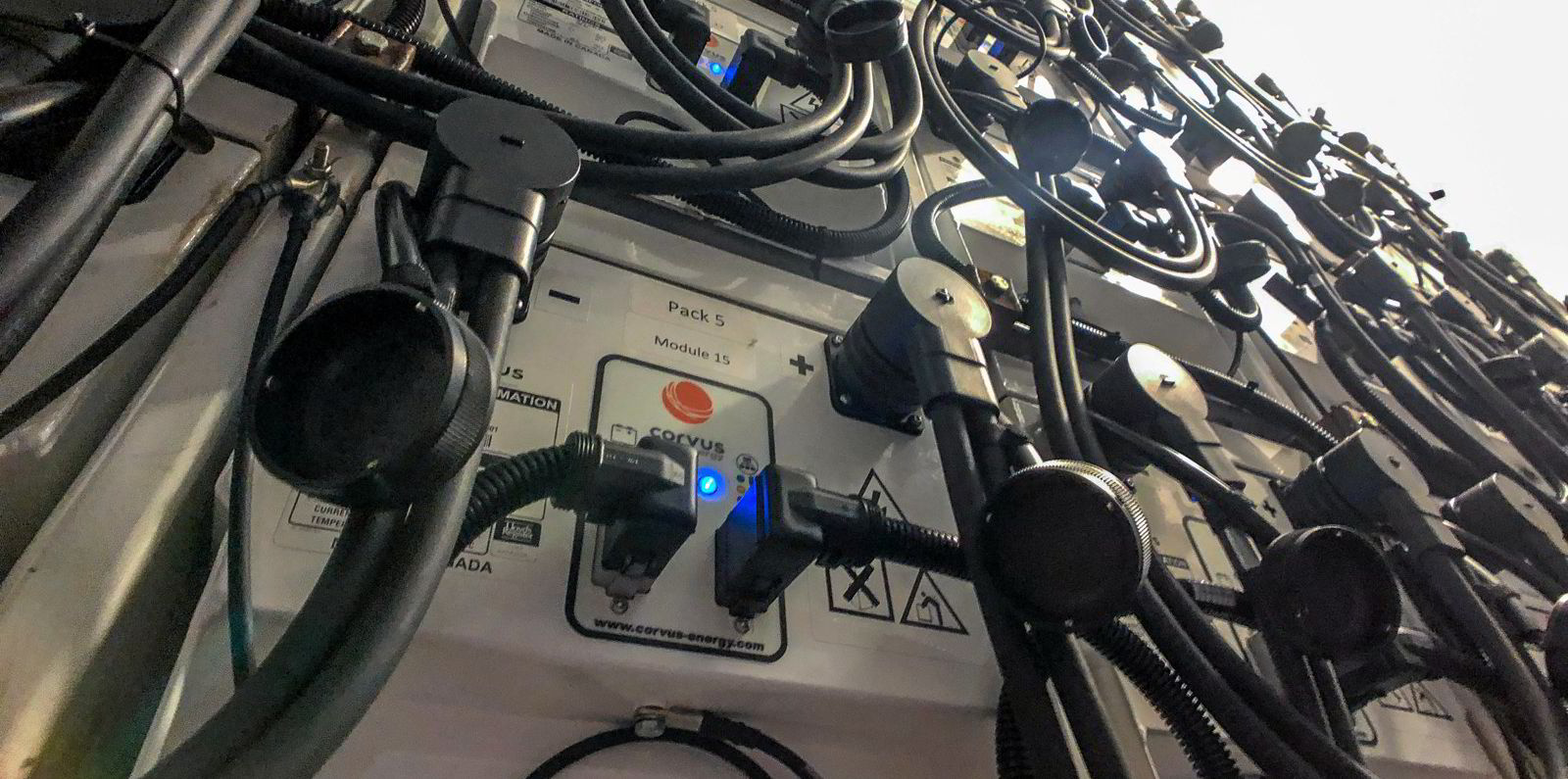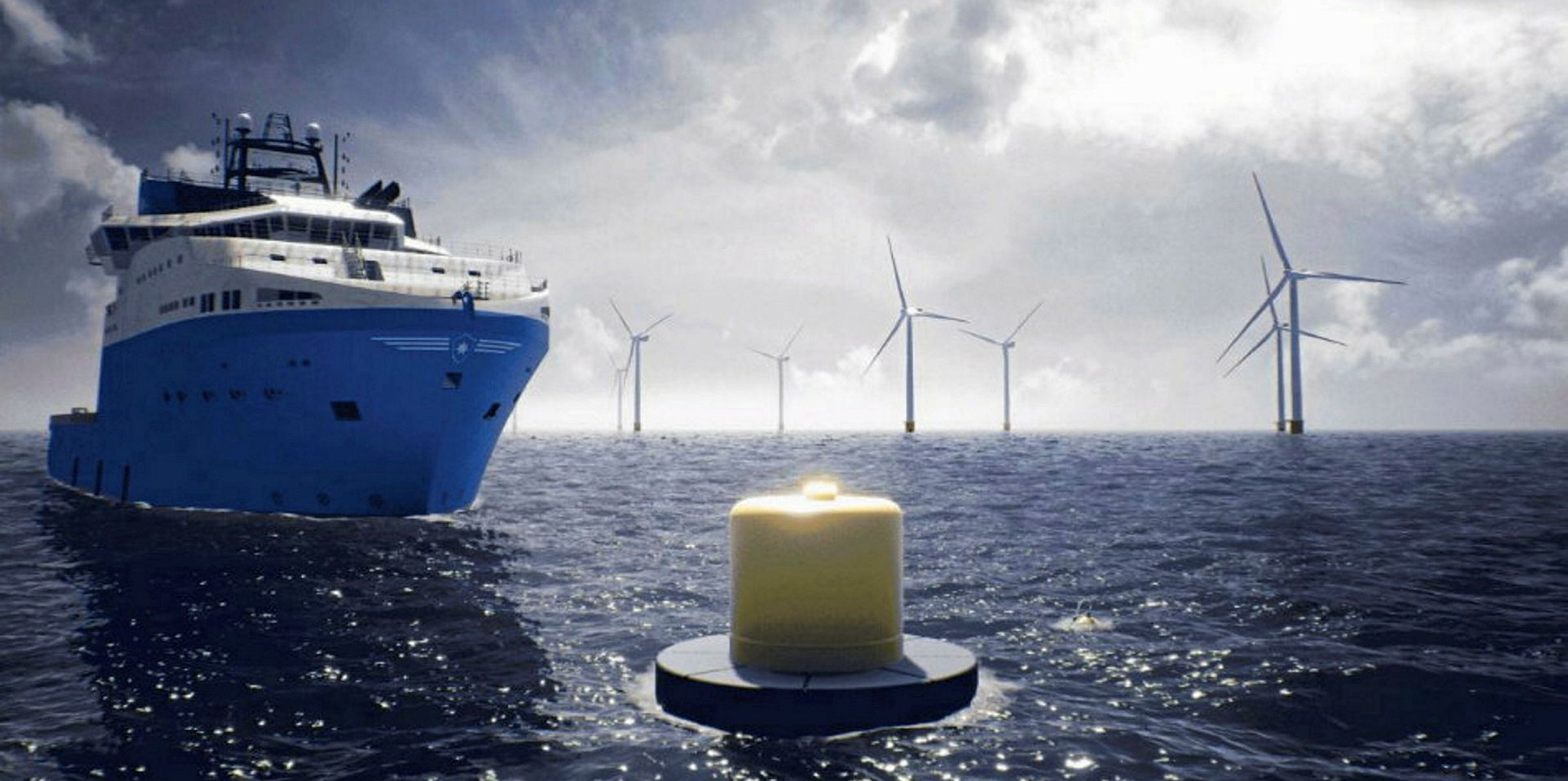AP Moller-Maersk is involved in a partnership with battery cell maker Freyr.
The Danish liner giant has been publicly lukewarm about the prospects for batteries on large containerships, and sources told TradeWinds that Maersk is more interested in transporting Freyr’s products than using them.
Electrifying vessels that cannot plug into a shoreside connection every day seems a far-off prospect, but Geir Bjorkeli of battery supplier Corvus Energy said his company is in early-stage talks with a major liner company.
Corvus is holding out hope for a big containership market for hybrid battery power.Bjorkeli believes partial electrification of large boxships is an attractive proposition, especially where a large number of refrigerated containers are being carried on global routes with extreme weather variations.
“There is a compelling case for hybridisation of large containerships,” he said. “They have a big auxiliary power plant with an extremely variable load, depending on how many reefer plugs are being used.”
But the leap from small ferries and coastal tonnage to oceangoing vessels under full or even hybrid electric propulsion remains a tough sell.
Maersk first experimented with hybrid battery power in 2019, when it put a 600-kilowatt-hour containerised battery from Trident Maritime Systems on the 4,496-teu Maersk Cape Town (built 2011).
A Maersk spokesman told TradeWinds batteries can make an important contribution to efficient use and production of on-board power, cutting fuel consumption by optimising the load on auxiliary generators.
Propulsion is another story.
“A Triple-E container vessel powered by batteries and sailing between Singapore and Rotterdam would have more than 80% cargo capacity taken up by batteries, highlighting that battery density still needs very significant improvements,” the official said.
“Maersk continues to explore several carbon-neutral fuel pathways and expects multiple fuel solutions to exist alongside each other in the future.”
Maersk has previously come out for methanol and ammonia and reiterated that they are its “primary fuel candidates for the future”.





